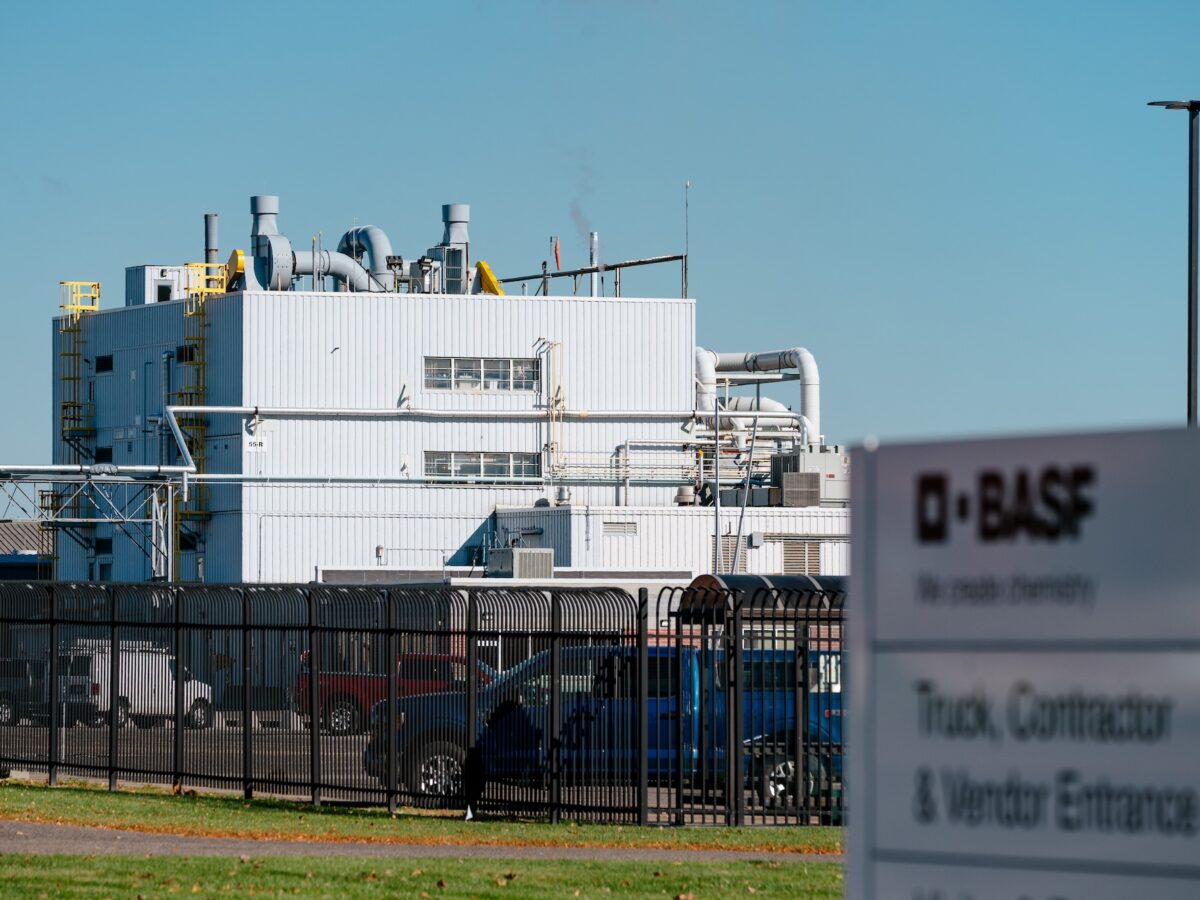Overview:
-The total cost to complete the Detroit River cleanup is estimated at $1 billion by the EPA, with a tentative completion date of 2030.
-A $350 million contribution from non-federal funding sources is required.
-"Getting that first contributor is the biggest barrier," said the CEO of a firm that is assisting the Friends of the Detroit River in the cleanup initiative.
The Detroit River connects the upper Great Lakes to the world. There’s a fondness for the passing freighters that deliver resources to steel mills, and it’s a source of recreation and pride. The soon-to-open Gordie Howe International Bridge connecting Michigan and the U.S. to Canada puts a spotlight on the relationship between the countries at a critical time.
A darker side of the river’s legacy lies beneath the flowing waters that attract tourism and support commerce.
The Detroit River is still home to 3.5 million cubic yards of toxic sediment remaining from the peak industrial era decades ago, when it was a dumping ground. Among the contaminants are high levels of bacteria, PCBs, metals, oil, and grease, according to the EPA.
A new, collaborative effort aims to end the inertia around a river cleanup.
At a recent invitation-only meeting in Wyandotte hosted by Friends of the Detroit River, water, science, and engineering firm LimnoTech outlined a plan to attract the long-absent investors necessary to secure federal funding to clean up the Detroit River’s toxic sites.
Detroit River cleanup cost estimated at $1 billion
Despite more than $4 billion in federal investment to restore the Great Lakes and its toxic sites since 2010, the Detroit River toxic sediment cleanup has been a low priority for the U.S. Environmental Protection Agency and Michigan’s Department of Environment, Great Lakes, and Energy, or EGLE.
EGLE awarded the Friends of the Detroit River’s sediment collaboration initiative a $300,000 grant from federal Great Lakes Restoration Initiative funds, a spokesperson for the state agency said earlier this year.
The Friends of the Detroit River said it selected LimnoTech to support the initiative.
The toxic sites run the length of the river, from Harbortown through the River Rouge and Ecorse shorelines to the Gibraltar Canals, based on illustrations presented by the EPA and EGLE in supporting roles at the Wyandotte meeting.
“LimnoTech’s primary role will be to assist Friends of the Detroit River with identifying and securing partners to participate in the non-federal match, considering both cash and in-kind contributors, and drawing from industry, municipal entities, nonprofits, community-based organizations, and state sources,” CEO Tim Dekker told Planet Detroit.
The cost to complete the cleanup is estimated at $1 billion by the EPA, with a tentative completion date of 2030. The non-federal funding requirement is approximately $350 million and therein lies the rub: The federal funds can’t be accessed without the local $350 million.
The key to the plan is “mostly about building and maintaining long-term relationships and a level of trust with all partners,” Dekker said.
The Detroit River cleanup effort may have opportunities to use a mix of contributions from industrial, nonprofit, and municipal partners, he said.
He gave the example of Milwaukee’s successful effort in securing $450 million for a river cleanup as an example of a success story and said “the same opportunities exist here in Detroit.”
LimnoTech’s core strength is in engineering, science, adaptation, resilience and more, but not in securing funding for projects. Planet Detroit asked Dekker why the company is qualified to lead on a fundraising project.
Dekker cited the company’s work on urban waterfronts around the country, including in Detroit at Ralph C. Wilson Park. “We almost always play a role in project funding, working with other partners to develop funding from federal, nonprofit, and philanthropic sources,” he said.
He said meeting with funders helps them see how river remediation can be part of a larger vision for development.
Planet Detroit asked Dekker to identify the biggest potential barrier to the Detroit River cleanup.
“Getting that first contributor is the biggest barrier,” Dekker said.
The tendency is that once one entity is onboard, others will be more likely to follow, he said. Again citing Milwaukee’s success, Dekker said once the Metropolitan Sewerage District took the lead, other interested — but cautious — parties joined.
MORE DETROIT RIVER COVERAGE
BASF Detroit River pollution: Environmental regulators discuss remedy for contaminated groundwater
Environmental advocates are calling for urgent action as regulators outline plans to curb pollution from BASF’s Wyandotte facility, which discharges 60 gallons of contaminated groundwater into the Detroit River every minute.
Detroit’s riverfront dream delayed by $40 million embezzlement
William Smith, who held sway over the Detroit Riverfront Conservancy’s finances, faces 19 years in prison for embezzling $40 million intended to enhance the city’s riverfront, impacting community projects and delaying riverwalk developments.
Michigan regulators request BASF’s plan to halt Detroit River pollution: Letter
Michigan regulators give BASF 60 days to produce a plan to stop contaminated groundwater from its Wyandotte chemical plant from polluting the Detroit River.
Detroit River cleanup comes at time of federal uncertainty
The unmentioned backdrop at the sediment remediation launch event is the EPA is now under control of President Donald Trump’s Administrator Lee Zeldin, who has pledged to make dramatic cuts to the agency’s budget and staff. Zeldin has also redefined EPA’s mission into “Five Pillars.”
The first pillar references the necessity for clean air, land, and water. The others cover energy dominance, permit reform, artificial intelligence, and bringing back American auto jobs.
Veteran Great Lakes advocate Laura Rubin’s take on the EPA plan: it’s more about economic development than environmental protection.
Planet Detroit asked Dekker how the new EPA mission statement relates to river remediation. He acknowledged the “uncertainty” that comes with Zeldin’s priorities and how they will be enacted, but he expressed optimism.
“We think that the work that Friends of the Detroit River is pursuing on the Detroit River is the perfect model for how environmental remediation and economic development go hand-in-hand,” Dekker said.
Planet Detroit asked the EPA’s Great Lakes office in Chicago how the new EPA framework would impact Detroit River sediment remediation.
“All proposed projects will be individually evaluated for consistency with the Five Pillars,” an EPA spokesperson said.
‘The state’s involvement is important’
In late 2024, Planet Detroit reported on a campaign by 62 entities from various disciplines that lobbied the state to budget the approximate $100 million it would take to jump start remediation of the river’s toxic sites.
Three Democratic state senators — Stephanie Chang, Erika Geiss, and Darrin Camilleri —represent districts that border the Detroit River. They supported the funding but it did not survive the budget process.
Planet Detroit asked EGLE for information about use of state funds for sediment remediation in the Detroit River. EGLE spokesperson Jeff Johnston said Clean Michigan Initiative funds were used for the Black Lagoon project near Trenton in 2004 but he did not specify the amount.
A 2018 Clean Michigan Initiative document obtained by Planet Detroit listed $25 million in the fund for sediment remediation but Johntson could not provide details about specific allocations.
Planet Detroit requested an interview with EGLE concerning the Friends of the Detroit River collaboration but did not receive a response.
On the historical lack of significant funding from the state of Michigan, LimnoTech’s Dekker said: “the state’s involvement is important.”




